The wealth of legends created by the people of a region are invaluable in helping to discover their history, since this imaginary cultural heritage shows the response of its inhabitants to the deeper questions facing the people that form part of a community. Questions that set out to explain their origins, their role in the world and what might exist in the afterlife.
The answers to questions such as these are different in each culture and gave rise to a set of myths, legends, beliefs and rituals that give an identity and personality to a group of people.
Geographical locations, features of the physical surroundings or contacts with other cultures have led certain territories to create a richer and stronger world of the imagination that lasts throughout time. This is the case with Costa da Morte, a region on the edge of Europe, where the earth ends and an immense ocean begins.
The region’s location on the edge of the continent was the main cause of the wealth of legends in this part of Galicia. This unique characteristic has been combined with specific places in the region: stones, lagoons, mountains, caves, trees and historical ruins, sacred places linked to ancient divinities that later became Christian saints, and that are now the main sanctuaries in the area.
The very name of Costa da Morte also plays a part in a collective imagination that attempts to explain its origin. Some are of the opinion that it may be related to the death of the sun that sinks into the waters of the Atlantic every night, although the majority believe that it comes from the many shipwrecks that took place on this dangerous coastline.
Even the maritime tragedies are not free of an aura of legends that talk about the wrecks being caused by evildoers who wanted to steal the ships’ cargoes, heartless criminals who went to the coast on stormy nights leading cattle with lamps tied to their horns to simulate ships sailing closer to the coast, inciting other vessels to come closer and so run aground on the rocks. This macabre legend is regarded as untrue by most academics, although some people continue to believe that they are true.
Granite is the predominant stone in Costa da Morte, especially on the coast. Granite can take unusual shapes when it is eroded by the wind or water: some can look human, others may resemble animals. These shapes awoke the curiosity of the local inhabitants, who gave them a transcendental value and converted them into objects of worship where rituals were practised to cure diseases or obtain some other type of benefit.
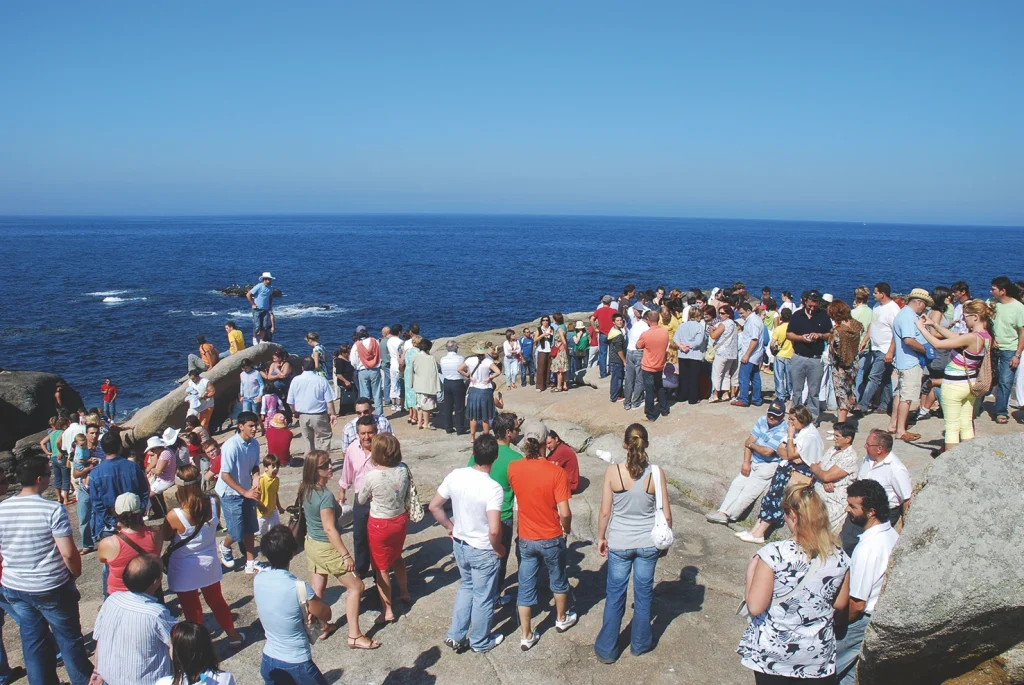
There are several places in Costa da Morte where rituals relating to stones were and still are practised. The most famous is the one at Punta de A Barca de Muxía where, according to the local teacher Antón Castro, there was a sizeable prehistoric cult sanctuary dedicated to the stones, which were later Christianised with the sanctuary of A Virxe da Barca. What may have begun as a site where fertility rites were practised later became the most important Christian sanctuary in the region. The monks of the monastery of Moraime were the driving force behind these changes, assimilating ancient pagan cults and inventing the legend of the arrival of the Virgin Mary on a stone boat, thus integrating the most important stones of the sacred space such as Pedra de Abalar and Pedra dos Cadrís.
Other stones in the region were attributed with properties that could make people fertile, such as Cama do Santo, located in the now nonexistent chapel of San Guillerme de Fisterra, which, according to the local priest Martin Sarmiento, was visited by infertile couples who wished to have children. He also mentioned the existence of similar practices in some stones on Monte Pindo.
There are stones whose size or location have led to legends being associated with them, such as the enormous cloven stone called the Sala do Perello, near the sanctuary of A Barca. The stone is some distance away from the town of Muxía and is large enough for couples to hide in, with the resulting idea that it invites people to sin, for which reason children are told to keep away from it.
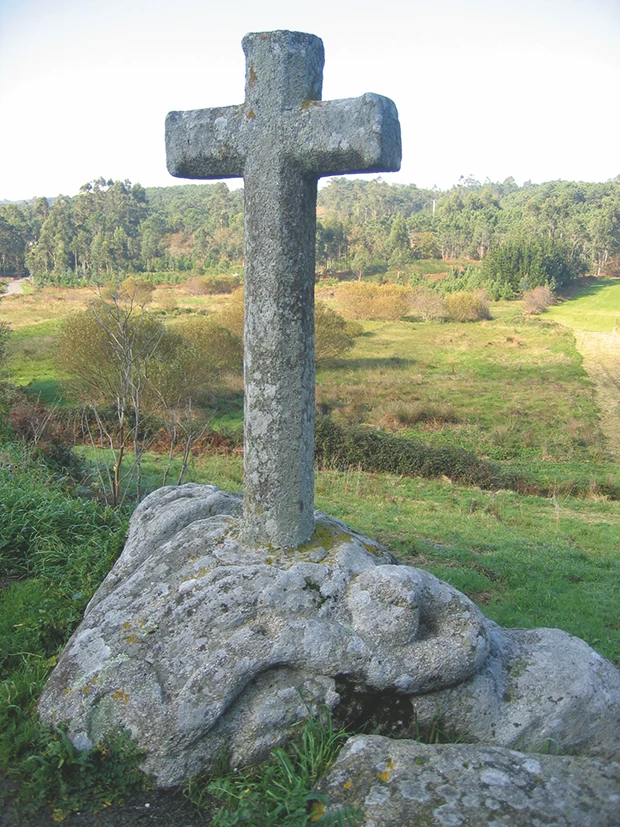
Pedra da Serpe de Gondomil, in Corme, has a carving of a winged serpent similar to a dragon, which gave rise to the legend of Santo Adrián, patron saint of the parish, according to which the valley was infested with snakes that attacked the resident, but when the saint arrived he stamped hard on the ground and all the snakes were buried under the stone.
The story surrounding Pedra do Frade, on the track from Vilaseco to Muxía, is that a friar standing next to the stone on his way to the monastery of Moraime was devoured by wolves, who left only his sandals and some of his clothing. A cross was placed on top as a symbol of the incident.
One very common type of legend in Costa da Morte are those related to lagoons, rivers and the sea. There are many legends about flooded cities in this part of Galicia. Some of them are conserved in the memory of the people who live near such spaces, such as the legend of the lagoon of Alcaián in Seavia (Coristanco), which has now become a bog called the Braña Rubia because of the reddish colour of the soil. The story goes that Jesus Christ and Saint Peter came to the city that existed there disguised as beggars to seek lodging. The people of the city refused to accept them in their homes and even set the dogs on them. So Jesus Christ said:
Farewell, Alcaián, you set dogs on me You shall sink and never come back.
The city then sank below the waters of the lagoon. That is why some days one can hear the sound of church bells, cocks crowing and the barking of dogs coming from the lagoon. The legend of the lagoon of Traba in Laxe says that there was a city there called Valverde. Saint James, the patron saint of the parish, arrived there one day and asked for lodging. No one wanted to help, apart from one old lady who offered him hospitality. The next day the saint asked her to accompany him to the high ground of A Moa. When they arrived there, they looked back and saw the city disappear under the waters of the lagoon.
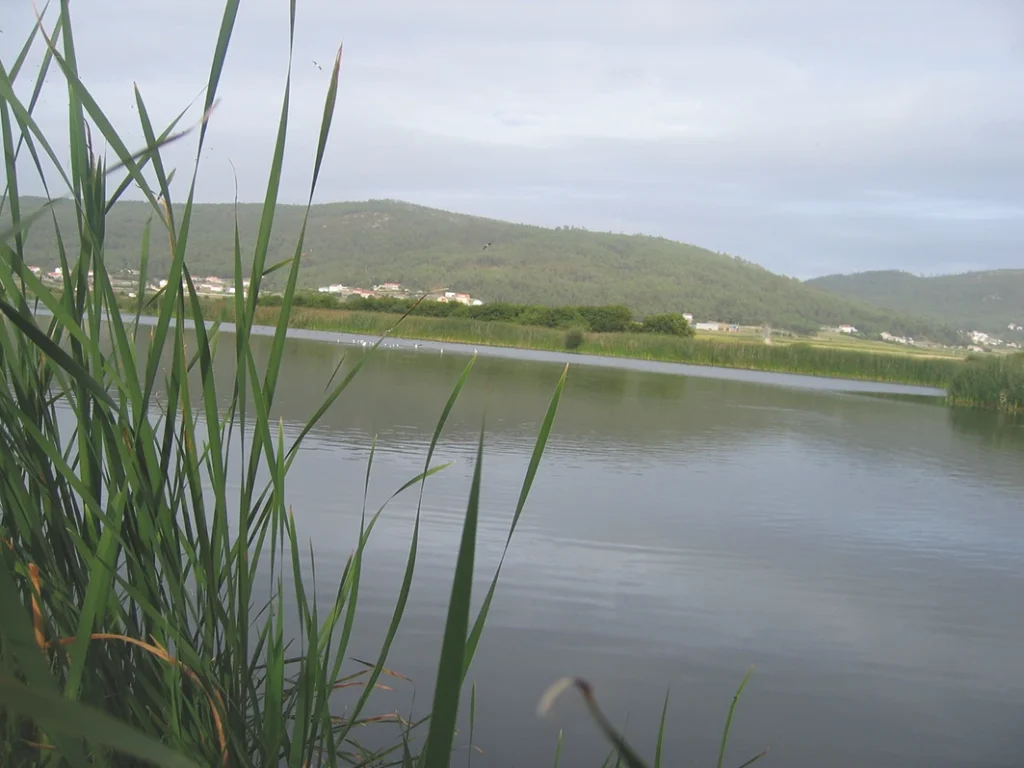
A similar legend is that of the city of Duio in Fisterra, where there once was a lagoon at the bottom of the valley. There are several versions of the tale, one of which says the Jesus Christ arrived there and stopped next to the calvary of O Rapadoiro and said: “may God convert you, because we cannot”, and the city disappeared.
The mythical city of Duio is also present in the legend of the transfer of the remains of Saint James the Apostle to Galicia, as it was the place where the king or Roman governor lived. Queen Lupa sent the disciples bearing the remains of the Apostle to the city to ask for a place to bury him. This tale is mentioned in the Codex Calixtinus.
Similar legends include the city of Valverde at the beach of A Ermita, in Corme, the city of Galilea in the lagoon of Baldaio and the city of the lagoon of As Xarfas in Louro.
Springs, wells and rivers are also places where fantastic beings may also appear. A hen with her chicks appears at night at the spring of San Paio (Coristanco); carvings appear on a rock next to the spring at San Xoán de O Esto (Cabana de Bergantiños) on Midsummer’s Eve; a golden harrow can be found in the well of A Forca (Riobó, Cabana de Bergantiños) and a fantastic being emerges from the well of A Xerpa, at the mouth of the river Anllóns. Half-woman and half-snake, she seduces and attracts all those who look at her.
There are also many legends about mountains, such as Monte Neme, whose name means “sacred forest”, which most likely comes from a stone circle or cromlech at the peak, commonly known as Eira das Meigas, where, according to tradition, the witches of the area would come together on Midsummer’s Night to issue judgements against human beings. The space was later Christianised with the chapel of Santa Cristina.
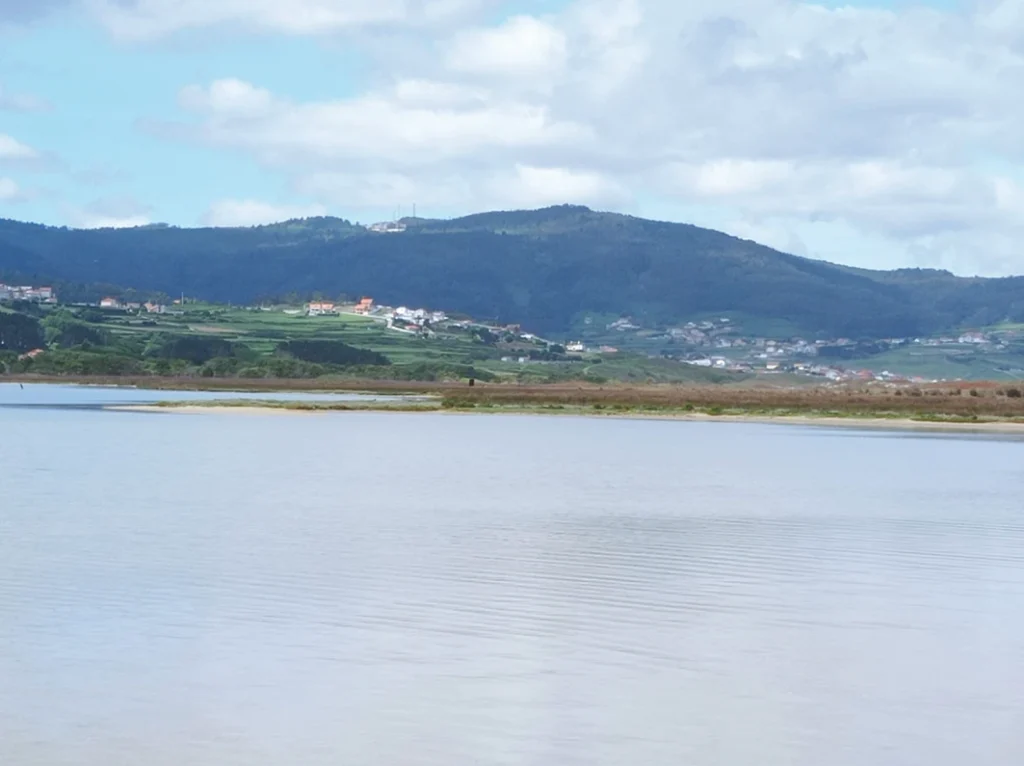
In Penedos de Pasarela and Traba, a beautiful natural theme park, visitors can see Torre da Moa, a huge stone resembling a giant millstone that stands over the valley and beach of Traba. The legend says that under the stone is the Capela dos Mouros, built by mythical beings who hid their treasure there. Another part of the legend says that there was a tunnel that connected this place to the lagoon of Traba.
Monte Facho in Fisterra, which ends at the famous headland or promontory of Nerio, is another place that is full of stories and legends. Several places on the mountain are linked to tales, such as Pedras Santas, where the Virgin Mary was said to rest or where the previously mentioned chapel of San Guillerme was located. Some scholars identify this saint with William X, Duke of Aquitaine, immortalised in the character of Don Gaiferos, while others believe that it may have been a hermit who lived there. San Guillerme is also related to the legend of the barrel of wine, told by the Polish traveller Erich Lassota in the 16th c.
The famous legend of Orcavella is also linked to Monte Facho in Fisterra, according to the story told in the 16th century by the knight Julián Íñeguez from Navarre, who was on pilgrimage in the region and heard the tale of an old woman who lived for 176 years as was an expert in the arts of magic, who robbed and ate all the children who fell into her hands. Tired of life, she retired to this mountain and dug a tomb between some crags, helped by a shepherd who was also bewitched and taken captive. She then covered the tomb with a huge slab and died after three days in his arms. The shepherd’s friends heard him cry for help and tried to rescue him, but they could not because the tomb was ringed with snakes.
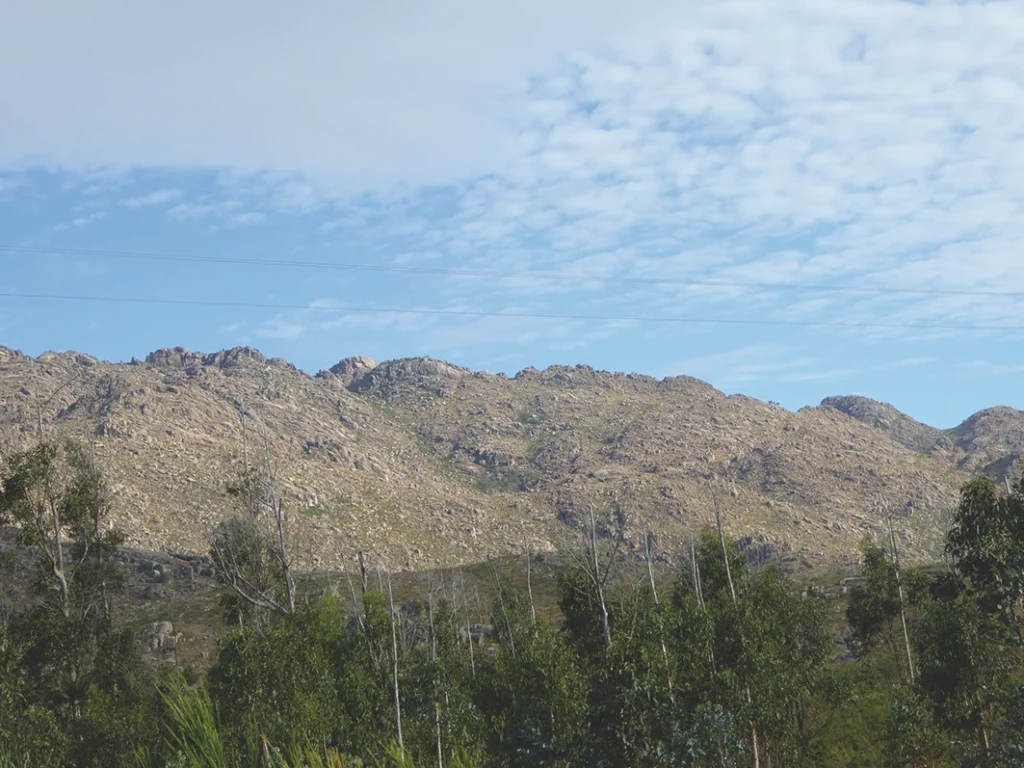
Another legendary place in Costa da Morte is Monte Pindo, also called the Celtic Olympus. Its close proximity to the sea and jagged granite peaks make it an ideal place for myths and legends. The intensive fragmentation of its rocks created a terrain full of crests, caves and gorges that make it difficult to walk around it. Martin Sarmiento, a priest and writer, was struck by the many stories relating to Monte Pindo, such as the belief that grass there grew much faster at night, it was full of medicinal plants and that infertile couples went there to procreate and have children. There are stories about two castles, one on the peak of Penafiel, destroyed by the Irmandiños, and another on the Pedrullo that dates back to the 10th century. The latter was said to be one of the palaces of queen Lupa. Another legend says that queen Lupa was buried with a treasure on the summit of A Moa. There is a natural tunnel in the mountain called A Casa de Xoana. A legend says that on Midsummer’s Night the local witches meet to prepare the spells for the coming year and then go to Chan das Lamas, a flat area on the mountain, before heading off home.
There are also legends about caves and tunnels. The most famous of these is the legend of A Buserana, at the northern end of Monte Cachelmo in Muxía, near the tourist hotel of Costa da Morte. The roaring of the sea can be heard inside the cave on stormy days, which is very probably the reason behind the story told by the sailors of Muxía. However, it was the local poet Gonzalo López Abente who created a literary version of this legend in his novel Buserana, published in 1925. The novel links the cave to the castro of Xansón, on a nearby hill. A castle stands there, the property of the father of Florinda, the heroine, who is in love with the troubadour Buserán.
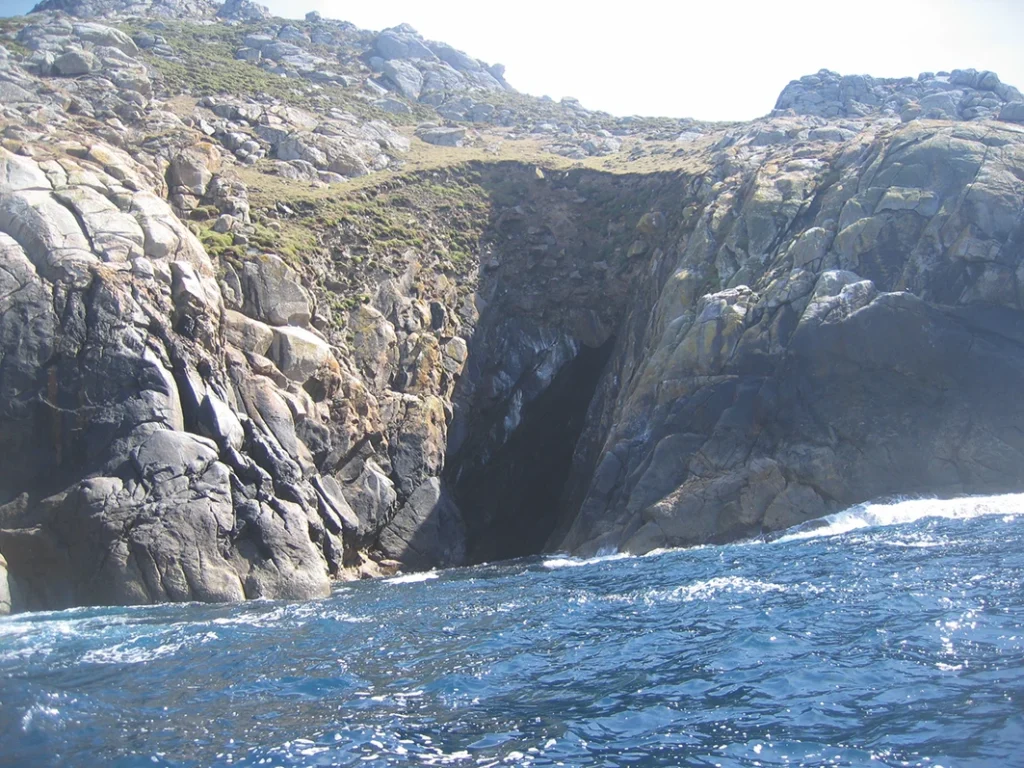
Legends about tunnels are very common in areas where there are the ruins of castros or medieval castles. One of the most popular tales is about a tunnel between the towers and the church of Santiago de Mens (Malpica). The story says that a count who lived there kidnapped a young girl and kept her prisoner there. The local people decided to attack the fortress and free her. When the count saw that he was surrounded he tried to escape through the tunnel, but the locals set fire to both ends and the noble died inside. Local residents say that, since then, the wheat planted above the tunnel grows less and ripens earlier.
Trees that are especially old or close to a sanctuary are often granted curative or supernatural powers. The old oak of Santo Antón in Vilardefrancos (Artes, Carballo), regarded as the oldest one in the region, is said to have been born inside the chapel dedicated to the saint. It is attributed matchmaking powers. If a young girl goes to the tree, walks around it three times and manages to insert a stone inside one of its holes, she will be married before the year ends.
The ancient oak next to the chapel of San Fins in Cambeda (Vimianzo) is attributed with properties to cure diseases such as hernias and stomach pains. Children with hernias undergo a ritual in which they pass nine times through a split branch. If the branch is made whole, the child will be cured. Another tradition is to walk nine times around the tree to cure any kind of pain.
Legends are often invented about ancient remains such as dolmens and castros to explain their origin or purpose. The legends about mouras and mouros (supernatural beings) are often related to ancient ruins.
Some scholars defend the theory that the legends of mouras who built the megaliths can be traced back to before the Romans and for this reason are similar to the ones in other Atlantic regions, such as Brittany and Ireland. Dolmens may have been places of worship for fertility rites or to cure illness, and so the Catholic church imposed negative connotations with the characters that appear in such legends, converting mouras into repugnant witches to stop people from going to these places. These ancient beings, with the power to transport huge blocks of stone, may in fact represent ancient female divinities such as fertility goddesses
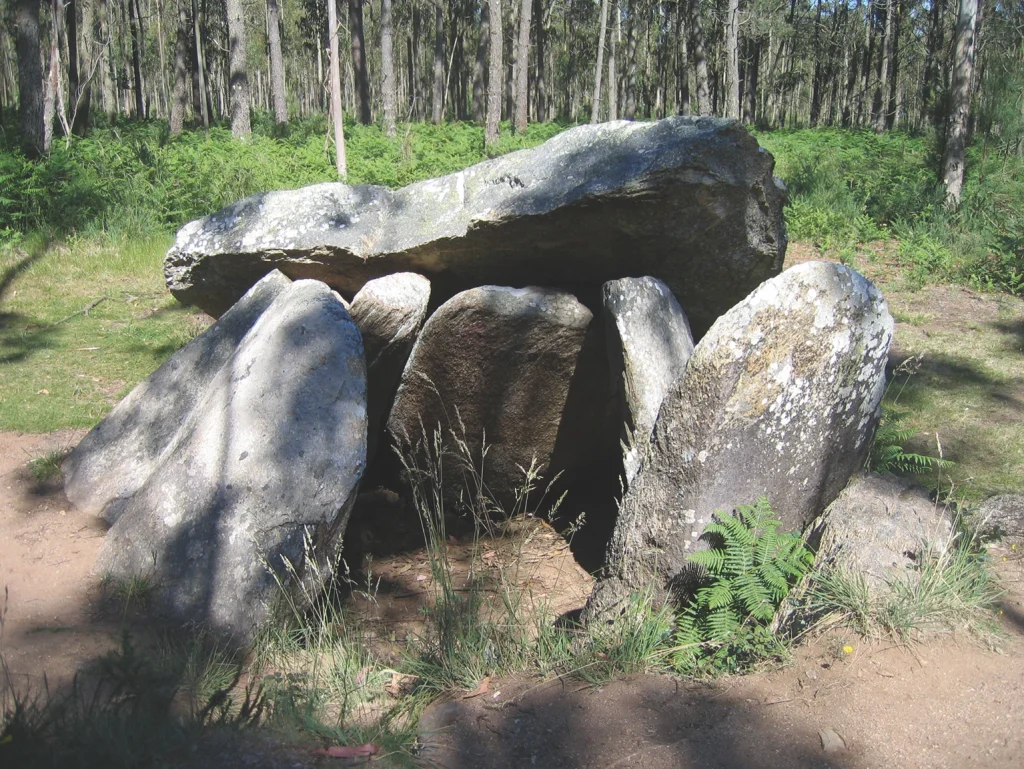
Mouras may appear as beautiful young women with blond hair. They can be seen in places associated with water (springs, rivers and wells), breastfeeding a baby, washing clothes or combing their hair, but her supernatural powers enable them to disappear or turn into a snake. One has to know how to break the spell to turn her back into a woman.
The mouros are more closely associated with castros, and in some cases were the inhabitants and builders of such places. Their way of life is somehow similar to human beings, but they possess supernatural powers, such as making themselves invisible and building structures in just one night. They live underground, where they keep large treasures.
There are many legends about virgins and saints in Costa da Morte, some of which are hagiographies set out to explain why a sanctuary was built in a particular place or describe the appearance of the divinity that the place is dedicated to. Many sanctuaries in the region are linked to legends about the patron saint arriving from the sea, as is the case of the Holy Christ of Fisterra, the Virgin of Xunqueira, San Marcos of Corcubión, the Virgin of A Barca, the Virgin of O Monte in Camariñas and the Holy Spirit of Camelle. Other legends describe how local people try to take an image that has appeared to the parish church, but the image goes back to its original location, to show that this is the place where it wants the chapel to be built.
A legend related to the Way of St James of Fisterra and Muxía is that of the vákner, an unknown wild animal mentioned by the Armenian pilgrim Mártir, bishop of Adzenján, who encountered the creature when crossing a wild and lonely part of the country, near O Marco do Couto (Os Buxantes, Dumbría), on the route to Fisterra in 1492. He arrived at Santiago de Compostela after a pilgrimage through several European countries from 1489 to 1496.
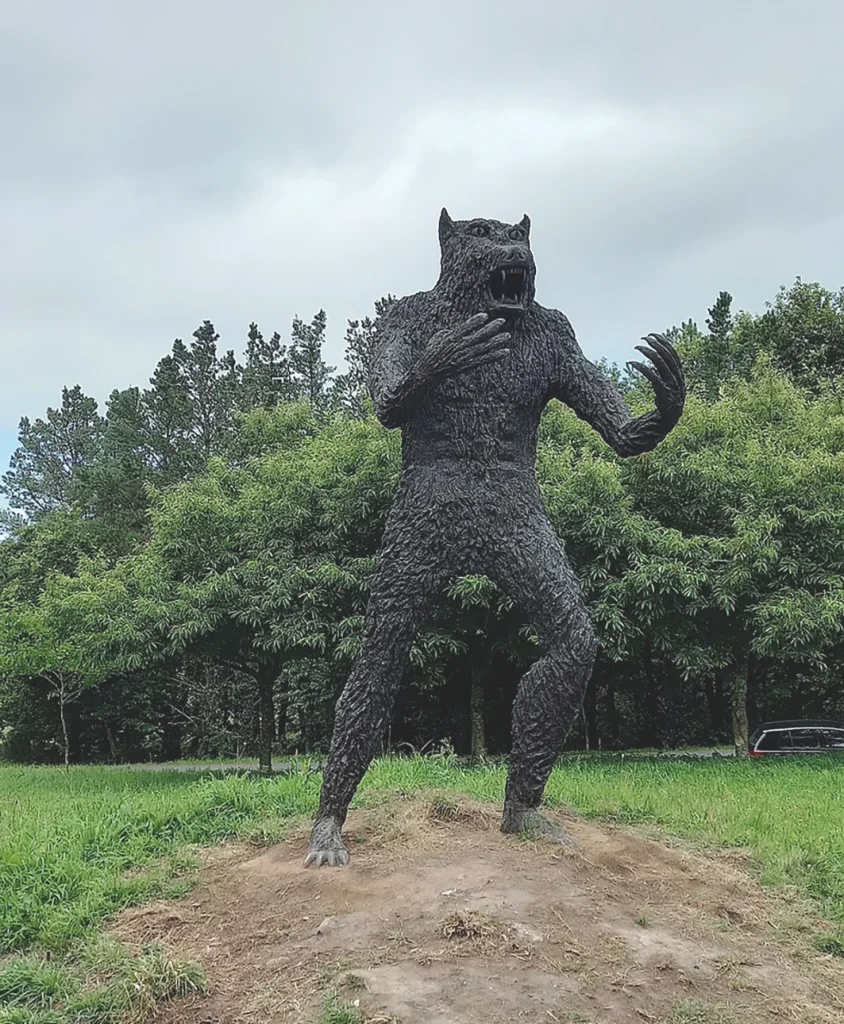
The pilgrim’s vague description makes it difficult to identify what kind of beast it was that he encountered in such a lonely place, although different interpretations have been offered about this enigmatic creature, ranging from the realistic to the fantastic.
The part of the original text that mentions the animal was written in Armenian. It was translated into French in the early 19th c. by Antoine Jean Saint Martin and then into Spanish by Emilia Gayangos de Riaño. It reads as follows:
“I suffered many travails and fatigues on this journey, in which I encountered many wild and very dangerous beasts. And I encountered the vákner, a wild animal, large and very dangerous.
-How could you save yourself –they said to me-, when groups of twenty people could not pass?
I then went to the country of Holani where the inhabitants eat fish and I did not understand their language. They treated me with the greatest consideration, taking me from home to home, and admiring of the fact that I could escape from the vákner”.
The French translator believed that the animal would have been a bull or bear, but Gayangos, who translated the text into Spanish, identified it as a lobo cerval (a lynx that inhabited the Cantabrian Coast until the 19th c.). Scholars like José Luis Pensado, Aurora Lestón and Fernando Alonso Romero do not reject the idea that if was an imaginary or mythical animal. One theory is that it may have been a beast created by the Catholic church to persecute the pagan cults that were deeply rooted in the area. Another is that it was a dragon, while Alonso Romero believes that it was a mythical figure from popular folklore with Indo-European origins because of its similarity to the Basque besajaun, which lives in forests, and the Asturian busgosu, a powerful beast with fur and horns, which in Galicia may be related to the nubeiro, an evil being that causes thunder and lightning. Another theory that should not be discarded is that it was a wolf or werewolf, another Indo-European figure.
The biologist Martiño Nercellas offers a new vision of this mysterious animal based on the interpretations of previous authors and zoological factors related to events that took place over the course of centuries in Europe.
He regards the idea of the creature being a lynx or bear as an unlikely one, since they no longer inhabited the region in that period. He also doubts that it was a wild bull, given that there are no traces of their presence in these mountains. He also rejects the idea of it being a wolf in a normal state, because such an animal would be incapable of terrifying a group of 20 people; however, he does accept the possibility of it being a wolf infected with a virus that could change its behaviour, one that in the advanced stages can make an animal act with extreme violence, a diabolical wolf like the Beast of Gévaudan, which did so much harm in the south of France. He quotes cases of sick animals in other European countries, Galicia and even in Costa da Morte. Could a rabid animal have been the beast that bishop Mártir saw on his pilgrimage to Fisterra? Nercellas asks this question.
More than 500 years after the tale was told, the town hall of Dumbría decided to increase awareness of this unknown creature and so boost the image and popularity of the Way of St James of Fisterra and Muxía and make it a symbol of the town and a tourist resource.
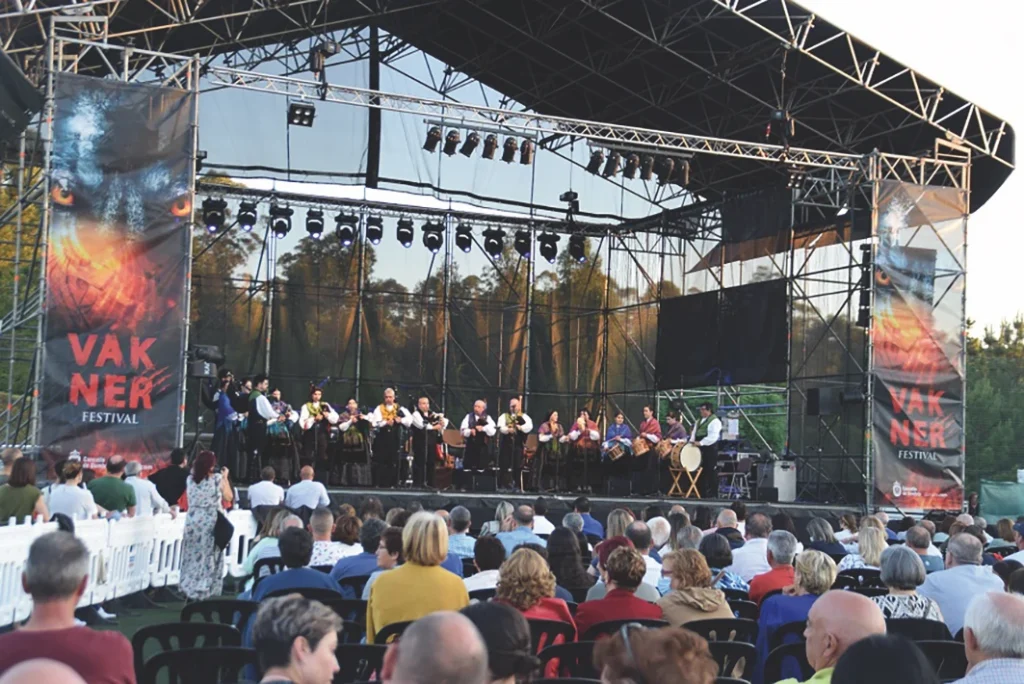
To make these aims a reality and promote a figure that had already become a legend, the town government has programmed a series of events in recent years, such as the International Meeting on the Vákner Territory in October 2019, entitled “The Vákner, a medieval monster on the Way of St James of Fisterra and Muxía”, with the participation of researchers on this or other related subjects; the installation of a bronze sculpture of almost 5 metres in height of the mythical creature, created by the artist Cándido Pazos, near the calvary of O Marco do Couto; and the Vákner Festival itself. The latter two events were held on 28 May 2022 along with the 3rd Vákner Territory Literary Competition, open to school students and adults.